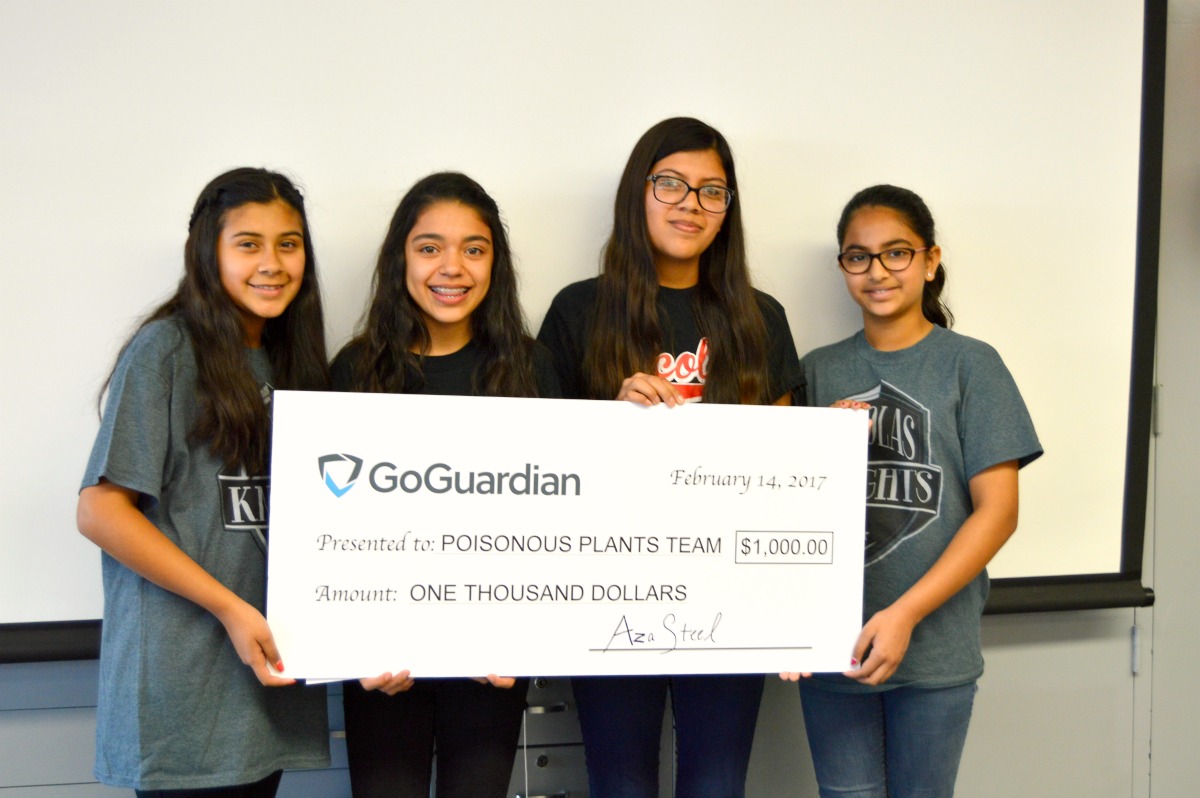Their initial task? To come up with an innovative concept for a smartphone app.
But a team of middle school girls from Nicolas Junior High in Fullerton didn’t stop there. With help from their teachers and industry professionals, they dove into coding and learned the programming language of JavaScript before building a prototype app capable of helping hikers identify poisonous plants. And their work paid off.

On Tuesday, the four Nicolas seventh- and eighth-graders were celebrated in their school’s STEM Lab after earning honorable mention in the Congressional App Challenge, which comprises a series of regional competitions hosted by members of Congress.
Typically, these contests are the domain of tech-savvy high schoolers. But don’t tell that to Cassandra Hermosillo, Shelly Fonseca, Nevya Patel and Jocelyn Salas, who transformed an idea for an app into a working prototype in their AP computer science class.
“Because we were able to finish this, we accomplished something that personally I thought we would never be able to do,” said Cassandra, 12. “It’s taught me that girls can do the same stuff that boys can do.”
Along with certificates, the students were presented with a check for $1,000 from GoGuardian, an educational technology company that also had a hand in their success.
A year ago, school officials were exploring industry partnerships to help students learn coding and other higher-level skills. GoGuardian emerged and dispatched four mentors, who worked with the Nicolas students over a span of about eight months. The class received additional assistance from volunteer Richard Woo and his organization, CodEd.
Cassandra, Shelly, Nevya and Jocelyn mulled over a number of possibilities before moving forward with the poison-plant identifier, which they all agree was Jocelyn’s suggestion. They spent the next few months developing the infrastructure, design and content.
As part of their project, the students also produced a brief video that was shown on Tuesday. In it, they make the case that poisonous plants are a danger to hikers and others, and they demonstrate how their app can help. The prototype’s interface encourages users to enter their location and scroll through pictures of hazardous shrubs, which link to online resources. There’s even a tab with poison control contact information.
Science teacher Rick Briggs said the girls went from “zero to 80” on the project, soaking up coding and JavaScript.
“They are really confident in their programming,” he said. “They are actually mentoring other students in their class.”
Sure enough, Nevya had a little advice for those looking to follow in their STEM footsteps: Be persistent.
“There will always be errors and (students) will bump into a lot of problems,” she said. “It’s totally fine if they do. You just have to keep trying.”
